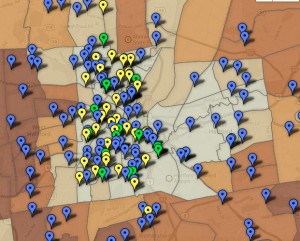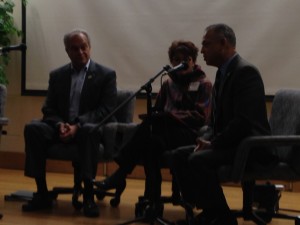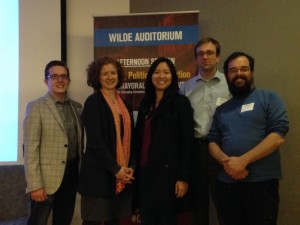Online tool to help find better Section 8 housing wins contest
Posted: April 30, 2014 Filed under: Housing Leave a comment »
An online map will show people looking for Section 8 housing where community resources are. It’s at http://ctoca.org/map/
“What we did today was we tried to create a mapping tool, where we would have a system where the clients and the counselors could sit together, enter the address and get information about neighborhood assets,” said Boggs.
Those neighborhood assets include things like schools and grocery stores, and the tool also has community information like unemployment rates and crime statistics. Boggs says that kind of information can help families move to communities where they can be more successful. She says currently, nearly 80 percent of Section 8 vouchers are disproportionately used in high poverty areas.
For now, the tool focuses on the Hartford area. An award of $1,000 in Tuesday’s contest will help them extend it to cover the entire state.
City mayors describe inequality with suburbs
Posted: April 30, 2014 Filed under: Housing, Income, Politics Leave a comment »
(L to R) Former New Haven Mayor John DeStefano, Norwich Mayor Deb Hinchey, Harford Mayor Pedro Segarra
Hartford Mayor Pedro Segarra said for the most part, Connecticut is a liberal state.
“I just think that when it comes to protecting people’s wallets, we’re a lot more conservative.”
Segarra said the fiscally conservative suburban towns aren’t willing to step in to help the state’s larger cities. Former New Haven mayor John DeStefano said Connecticut’s three biggest cities have nearly three quarters of the state’s affordable housing stock.
“The choices made 100 years ago and the choices that many of the communities of CT continue to make about who they zone out, has resulted in a separating of populations and concentrations of poverty and wealth in the state.”
That poverty is also concentrated in some of Connecticut’s smaller cities, like Norwich. Norwich Mayor Deb Hinchey, said the cities all wind up fighting for a finite amount of money.
“And where I become concerned about the inequalities is where that finite group of dollars isn’t disbursed evenly throughout the state.”
Hinchey said the state needs to reform its tax laws to be more fair. DeStefano, who retired last year after 10 terms in office, laughed at that, and said he could tell she’s new to the job.
DeStefano said cities in Connecticut need to take action to reduce their own economic inequality, rather than waiting for the state to take steps. Segarra challenged DeStefano on that, suggesting Hartford has a harder time making changes to impact the economic health of the city. Here’s their exchange.
Segarra said his administration is working on building housing to attract those higher-income people to live in Hartford. In New Haven, DeStefano provided incentives for Yale University employees to live in the city. Yale is the city’s largest employer, and provides more than $15 million a year in payments to support city services.


Recent Comments